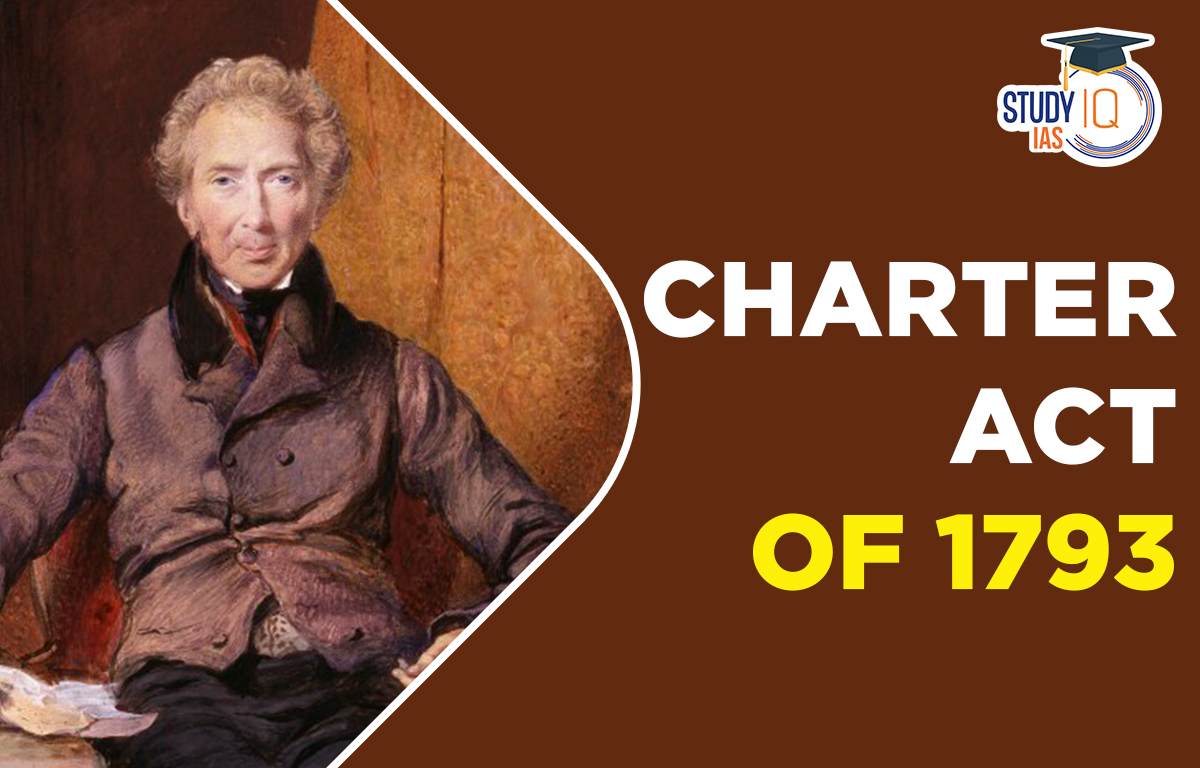Table of Contents
Charter Act of 1793
Read all about Charter Act of 1793. The East India Company Act 1793, also referred to as the Charter Act 1793, was approved by the British Parliament in order to renew the charter of the East India Company. The company had 20 years under this law to continue doing business with India. This article has complete details about Charter Act of 1793 for candidate who has been preparing for UPSC/ IAS Examination.
Read about: Charter Act of 1853
Charter Act of 1793 History
The East India Company Act, also known as the Charter Act of 1793, was passed by the British Parliament in an effort to extend the company’s charter, which had been granted by the Regulating Act of 1773, for another 20 years. With the continuation of this company’s monopoly, trade with India was permitted for the following 20 years. The Charter Act of 1813 further renewed this.
Read about: Indian Councils Act 1861
Charter Act of 1793 Objectives
The act’s primary goal is to give the Company another 20 years of commercial exclusivity in India.
Charter Act of 1793 Provisions
This Act preserved the company’s control over the British territories in India. The firm received a 20-year extension on its trade monopoly in India. The Act implied that the company’s political actions were conducted on behalf of the British government by stating that “acquisition of sovereignty by Crown subjects is on behalf of the Crown and not in its own right.”
The corporation was given permission to raise its dividends to 10%. Now, the Governor-General has more power. He might, in some cases, defy the verdict of his council. He also received authority over the rulers of Bombay and Madras. The Madras and Bombay governors had less power when the Governor-General was in those cities.
When he was absent from Bengal, the Governor-General could choose a Vice President from among the civilian members of his Council. The composition of the Board of Control was altered. A President and two subordinate members, who were not necessarily Privy Council members, were to make up the group.
The corporation was now in charge of paying the Board of Control and the staff. The company was supposed to pay the British government Rs. 5 lakhs from Indian revenue each year after subtracting all expenses. Senior firm executives were forbidden from departing India without authorization. If they did, it would be regarded as a resignation.
The company has been granted authority to grant trade licences to Indian citizens and employees of foreign corporations. The word for this was “privilege” or “country trade.” Opium was consequently sent to China. This Act divided the organization’s judicial and tax administration responsibilities, leading to Maal Adalats’ extinction (revenue courts).
Read about: Indian Council Act of 1892
Charter Act of 1793 Significance
The Charter Act of 1833 marked a turning point in India’s political and constitutional history for a variety of reasons. The appointment of the Governor-General of Bengal to the post of Governor-General of India was, first and foremost, an important step toward the unification and centralization of India’s administrative structure.
Second, since the East India Company ceased to exist as a business, it effectively served as the crown’s trustee for administrative matters. Thirdly, this act allowed for the first time the free inclusion of Indians in the national government. Indians were allowed to enter the civil service, but there were still strict requirements.
Fourth, for the first time, the legislative and executive responsibilities of the Governor-General in the Council were divided by this legislation. The law commission, headed by Lord Macaulay, codified the statutes as well.
Charter Act of 1793 UPSC
The Charter Act of 1793 increased the Company’s trading rights for a further twenty years. When Lord Cornwallis was appointed, he was given an explicit authority to overthrow his Council; but, the Charter of 1793 did not provide all Governors or Governors-General the same authority. The Governor-power General was given more attention by the Charter Act of 1793 than the other two Presidency—Bombay and Madras.
The Charter Act of 1793 had an impact on the Home Government as well. Two junior members who were not required to be Privy Council members would be on the Board of Control together with a senior member who would serve as President. Instead of coming from the British Exchequer, the salaries of all Board of Control members were to be paid from Indian profits.


 Maharashtra Bill to Curb Urban Naxalism,...
Maharashtra Bill to Curb Urban Naxalism,...
 Party System in India, Feature, Importan...
Party System in India, Feature, Importan...
 Consolidated Fund of India, Meaning and ...
Consolidated Fund of India, Meaning and ...





















